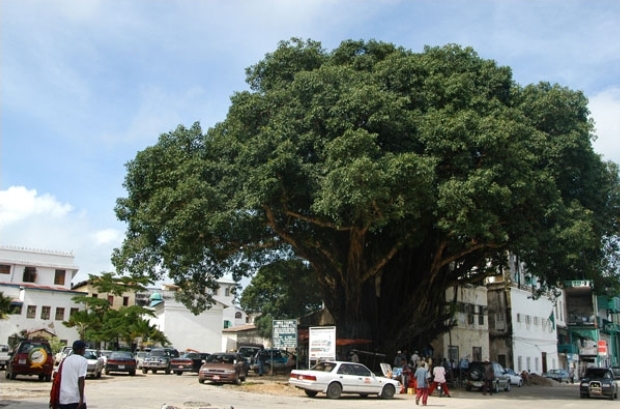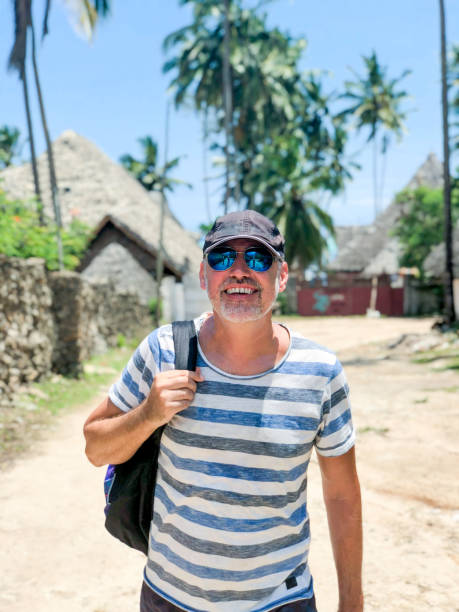Zanzibar Town: Other Places of Interest


Zanzibar Town offers a blend of rich history and vibrant culture, making it a favorite destination for travelers worldwide.
While its major attractions, like the museums and palaces of Stone Town, often steal the spotlight, there are several lesser-known but fascinating spots worth exploring. These places may not be headline attractions, but their proximity to more prominent landmarks ensures they are part of your journey through the town.
From lush gardens steeped in royal history to unique cultural hubs, these sites provide a deeper connection to Zanzibar's heritage. Visiting them adds an extra layer of charm to your experience, allowing you to understand the island beyond its iconic beaches. Each of these hidden gems tells a story, making them an essential part of any immersive travel itinerary.
In this article, we’ll guide you through these often-overlooked treasures, offering practical insights and historical background to help you appreciate their significance.
Whether it’s relaxing in a tranquil garden, learning Swahili, or discovering local crafts, these places promise a unique glimpse into Zanzibar's soul.
Historical and Cultural Sites
The People's Gardens

Located at the southern end of Stone Town on Kaunda Road, The People's Gardens, originally established by Sultan Barghash, serve as a peaceful retreat in the heart of the city.
These lush gardens were once reserved for the Sultan’s harem, providing a private space for leisure and relaxation. Over time, additional trees and plants such as tea, eucalyptus, cocoa, and coffee were introduced by Sir John Kirk, the British consul from 1873 to 1887, further enriching the garden’s variety.
The gardens underwent a significant transformation in 1899 during Queen Victoria's Jubilee, when Sultan Hamoud gifted the space to the people of Zanzibar. Renamed Victoria Gardens in her honor, the space now serves as a public oasis amidst the bustling town.
In the center of the gardens stands Victoria Hall, a building constructed over the baths once used by the harem. This hall later became the Chamber of the Legislative Council from 1926 until 1964.
Though the gardens and hall fell into disrepair after Zanzibar's revolution, they were lovingly restored in 1996 with support from the German government. Today, the Victoria Hall houses the offices of the Zanzibar Sewerage and Sanitation Project, yet it still stands as a testament to Zanzibar’s regal past.
Mnazi Moja Sports Field

Mnazi Moja Sports Field in Zanzibar
Born from the reclamation of a once-impassable swamp, Mnazi Moja Sports Field stands today as a testament to both human ingenuity and the enduring spirit of recreation in Stone Town.
A testament to this past is the enduring presence of an English-style cricket pavilion, a relic of the era when the field catered to the recreational needs of the colonial elite. In the 1920s, the English Club staked its claim, transforming a portion of the field into an exclusive enclave with croquet lawns, tennis courts, and the island's sole golf course.
While football now reigns supreme at Mnazi Moja, traces of its colonial past remain. Yet, the field retains a touch of the unpredictable, reflecting its origins. During the rainy season, the threat of flooding remains, adding a unique character to this otherwise picturesque venue.
The Big Tree

Planted in 1911 by Sultan Khalifa, the "Big Tree" (or Mtini in Swahili) stands as a venerable sentinel just west of the Old Dispensary. This magnificent tree, a towering presence in the heart of Stone Town, has become an iconic symbol of Zanzibar itself.
More than just a landmark, the Big Tree has woven itself into the very fabric of the city's history. It has graced countless photographs and illustrations, often serving as the visual anchor for depictions of the waterfront.
For generations, it has been a constant in the lives of Stone Town residents, a gathering place for locals and a beacon for sailors navigating the harbor.
Dhow builders, their hands weathered by the sea, have sought refuge beneath its shade, their craft echoing the timeless rhythms of island life.
Today, the Big Tree continues to cast a long shadow, both literally and metaphorically. It remains a potent symbol of Zanzibar's deep connection to nature and its rich historical past.
While the Sultan who planted it is long gone, the tree itself serves as a living testament to the enduring legacy of Zanzibar's royal heritage. And, in a beautiful echo of the past, local artisans continue to utilize its shade, their workshops humming with the sounds of creation beneath its ancient canopy.
Local Experiences and Cultural Hubs
Swahili Lessons at Taasisi Kiswahili Institute

Learning a few Swahili phrases can significantly enhance your travel experience in Zanzibar. It allows you to connect with locals on a deeper level, gain a better understanding of the local culture, and simply make your interactions more meaningful.
The Taasisi Kiswahili Institute, conveniently located within the State University on Vuga Road, provides an excellent opportunity to learn this vibrant language.
They offer a variety of courses to suit different learning styles and schedules. Standard classes typically run from 8:00 AM to noon, and cost $4 per hour or $80 for a full-week course. For those seeking personalized instruction, private lessons are available.
For a truly immersive experience, consider participating in one of their homestay programs. These programs offer the chance to live with a local teacher or family, providing invaluable cultural insights and the opportunity to practice your Swahili in a natural setting. Accommodation and meals are often included in these programs.
The Orphanage and Craft Shop
Tucked away near the imposing Fort lies the Island's orphanage, an intriguing glimpse into the past. The road leading to it winds through a tunnel beneath a grand building, a reminder of the island's colonial history.
This imposing structure, built in the late 19th century, once served as a social hub for English residents before transitioning into an Indian school until 1950.
The ground floor of this historic building houses a charming craft shop. Here, you'll find a delightful array of curios and pictures crafted by local artisans and the talented children of the orphanage. It's a wonderful opportunity to support the community while acquiring unique souvenirs of your Zanzibar adventure.
How to Visit These Places
Exploring Zanzibar Town and its surrounding areas can be an immersive experience, and the smaller sites are often conveniently located near major attractions. The key to integrating these spots into your day is walking. Zanzibar Town is compact and perfect for a leisurely stroll, allowing you to discover its rich culture and history.
Start your day by visiting The People's Gardens, which are located at the southern end of Kaunda Road, near the main hospital. It’s easy to pair this with a visit to Victoria Hall, which is located within the gardens. From here, you can continue your walk toward Mnazi Moja Sports Field, just across from the museum, on the opposite side of Creek Road. This is a great stop to catch a glimpse of the island’s recreational culture and colonial past.
If you're interested in architectural history, don’t miss the State House and the old British Residency, which are both close by.
If you're heading to the Big Tree, it's located about 100 meters along Mizingani Road, just west of the Old Dispensary. After taking in the iconic tree, head toward the nearby Taasisi Kiswahili Institute if you're looking to pick up some Swahili phrases. To finish off your day, visit the Island's orphanage near the Fort for a deeper look into Zanzibar’s social history.
Suggested Walking Route:
Start at The People's Gardens on Kaunda Road.
Stroll down to Victoria Hall and the British Residency.
Head east to Mnazi Moja Sports Field.
Continue to the Big Tree and the Old Dispensary.
Finish with a visit to the Taasisi Kiswahili Institute or the Island's Orphanage.
This route offers a comprehensive tour of the town’s heritage, culture, and architecture
For a seamless experience, feel free to use the WhatsApp button on the bottom right to easily book your visits. It’s the quickest way to arrange your plans without any hassle

Why These Places Matter
While the larger attractions like the Sultan's Palace or House of Wonders often draw more attention, the smaller sites in Zanzibar Town hold a special cultural and historical significance. They offer a deeper understanding of Zanzibar's diverse history, from the Sultanate era to the colonial period, and even into modern-day life.
The People's Gardens, for instance, originally laid out by Sultan Barghash for his harem, tells the story of Zanzibar’s royal past, while the nearby Victoria Hall and State House are reminders of the island’s colonial influence. These spots allow visitors to reflect on the shifts in Zanzibar’s governance and society over the centuries.
The Big Tree, a landmark for both locals and visitors, represents the enduring nature of Zanzibar’s traditions. It’s not just a tree but a testament to the continuity of local craftsmanship, with traditional dhow builders still using its shade for their workshops.
Additionally, the Taasisi Kiswahili Institute reflects Zanzibar’s commitment to preserving its language and culture, an essential part of its identity.
Ultimately, these places matter because they provide visitors with a more holistic understanding of Zanzibar’s evolution—from its rich cultural heritage to the dynamic mix of African, Arab, and European influences.
Visiting these sites allows travelers to experience the soul of Zanzibar, offering both historical insight and opportunities for personal engagement with the island’s vibrant culture.
Discover Zanzibar Beyond the Major Sights
Zanzibar Town is a treasure trove of hidden gems that are often overlooked by mainstream tourism. While the larger historical sites are important, it’s the smaller, lesser-known spots that truly capture the essence of the island.
Exploring these locations not only deepens your understanding of Zanzibar’s heritage but also allows you to experience the island in a way that many tourists miss. These quieter corners of Zanzibar Town provide an opportunity to stroll, reflect, and truly absorb the island’s atmosphere, making your visit more meaningful.
Next time you’re in Zanzibar, take the time to step off the beaten path and explore these hidden spots. They enrich your journey and ensure you leave with a fuller picture of what makes Zanzibar such a captivating destination.



